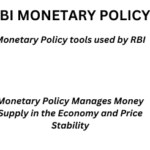UN COP16: The Global Methane Pledge (Basics Explained)


The Global Methane Pledge, an effort led jointly by the United States and the European Union, was launched at the ongoing UN COP26 climate conference in Glasgow. So far, over 90 countries have signed this pledge which is related to cutting down global methane emissions . One of the central aims of this agreement is to cut down methane emissions by up to 30 per cent from 2020 levels by the year 2030.
LEARNING FROM HOME/ WITHOUT CLASSES/BASICS
Methane is the second-most abundant greenhouse gas in the atmosphere, after carbon dioxide, According to the latest Intergovernmental Panel on Climate Change report, methane accounts for about half of the 1.0 degrees Celsius net rise in global average temperature since the pre-industrial era.
According to the International Energy Agency (IEA), while methane has a much shorter atmospheric lifetime (12 years as compared to centuries for CO2), it is a much more potent greenhouse gas simply because it absorbs more energy while it is in the atmosphere.
In its factsheet on methane, the United Nation notes that methane is a powerful pollutant and has a global warming potential that is 80 times greater than carbon dioxide, about 20 years after it has been released into the atmosphere.
There are various sources of methane including human and natural sources. Human sources of methane include landfills, oil and natural gas systems, agricultural activities, coal mining, wastewater treatment, and certain industrial processes, the US Environmental Protection Agency notes.
The oil and gas sectors are among the largest contributors to human sources of methane. In India, , in 2019, the Ministry of Coal asked state-run coal miner Coal India Limited (CIL) to produce 2 MMSCB (million metric standard cubic metres) per day of coalbed methane (CBM) gas in the next 2 to 3 years.
CBM, like shale gas, is extracted from what are known as unconventional gas reservoirs — where gas is extracted directly from the rock that is the source of the gas (shale in case of shale gas and coal in case of CBM).
The methane is held underground within the coal and is extracted by drilling into the coal seam and removing the groundwater. The resulting drop in pressure causes the methane to be released from the coal.
Wetlands are a key source of atmospheric methane. Warm climate increases the efficiency of microbes that convert organic matter into methane, the 2019 paper stated. But there are also anthropogenic sources of methane — leaks from global oil and gas production system are a key source. as rising methane emissions were the sum total of natural and anthropogenic activity.
CLIMATE CHANGE: Climate change refers to any change in climate over time whether due to natural variability or as a result of human activity. The term is commonly used interchangeably with global warming and green house effects and refers to increasing concentration of green house gases in the atmosphere that traps sun’s heat causes changes in weather pattern on a global scale.
Greenhouse gases allow sunlight (shortwave radiation) to pass through the atmosphere freely, where it is then partially absorbed by the surface of the Earth. Greenhouse gases are able to trap heat (longwave radiation) in the atmosphere, keeping the Earth’s surface warmer than it would be if they were not present. These gases are the fundamental cause of the greenhouse effect. Increases in the amount of greenhouse gases in the atmosphere enhances the greenhouse effect which is creating global warming and consequently climate change.
The ability of these gases to trap heat is what causes the greenhouse effect. So the more greenhouse gases you have in the atmosphere, the more heat stays on Earth. The principal forcing greenhouse gases are:
Carbon dioxide (CO2)
Methane (CH4)
Nitrous oxide (N2O)
Fluorinated gases



0 Comments